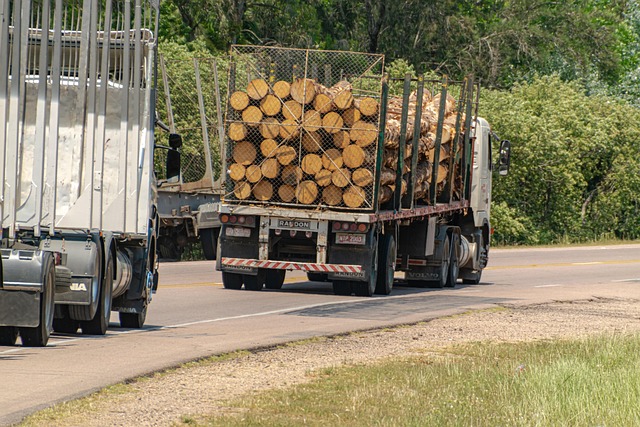Looking to register your car in California? It’s a straightforward process, but understanding the requirements is key. This guide walks you through every step, from gathering essential documents for VIN verification to completing the registration at the DMV and paying associated fees. By following these clear instructions, you’ll have your California vehicle registered in no time, ensuring compliance with local laws via accurate VIN check.
- Understand the Requirements for Car Registration in California
- Gather Necessary Documents for VIN Verification
- Perform a Vehicle Identification Number (VIN) Check
- Complete the Registration Process at the DMV
- Pay the Required Fees and Receive Your Registration Documents
Understand the Requirements for Car Registration in California

Before registering your car in California, it’s crucial to understand the requirements for car registration in this state. One key step is ensuring the Vehicle Identification Number (VIN) verification process is completed accurately. This involves a detailed inspection of your vehicle’s unique VIN, which serves as its fingerprint and contains vital information about its make, model, year, and other specifications. In California, this verification typically requires confirming the vehicle’s title, checking for any outstanding loans or liens, and ensuring that all necessary documents are in order.
Additionally, consider leveraging mobile vin inspection services, such as those provided by a mobile vin verifier, to simplify and expedite the process. These services allow you to conduct the VIN verification from the comfort of your own home or location of choice. A mobile vin inspection can help ensure accuracy and save you valuable time during the car registration process in California.
Gather Necessary Documents for VIN Verification

Before you begin the registration process, ensure you have all the essential documents for VIN (Vehicle Identification Number) verification. This is a crucial step in California car registration as it confirms your vehicle’s authenticity and history. Gather the following:
1. Your vehicle’s registration certificate from the previous state (if applicable).
2. The original title or a signed power of attorney if you’re purchasing a used car.
3. A valid driver’s license or state-issued ID card.
4. Proof of insurance that meets California’s minimum liability requirements.
5. If you’ve recently purchased the vehicle, a completed and signed California Vehicle Purchase Agreement (Form 197). For a mobile VIN inspection, some third-party services might assist in gathering these documents remotely.
Perform a Vehicle Identification Number (VIN) Check

Before registering your car in California, performing a Vehicle Identification Number (VIN) check is a crucial step. This process involves verifying the VIN’s accuracy and history, which can help ensure that the vehicle matches its listed details and hasn’t been reported stolen or had any major accidents. You can conduct a VIN verification through various online services or by using a mobile vin verifier app, which makes it convenient to check your car’s history from the comfort of your home.
A VIN inspection provides vital information about the vehicle’s past, including ownership changes, maintenance records, and any recall issues. In California, this step is essential as it helps prevent fraud and ensures that you’re registering a safe and legal vehicle. If you opt for a mobile vin inspection service, you can conveniently have the check done at your location, saving you time and effort during the registration process.
Complete the Registration Process at the DMV

Once you’ve gathered all necessary documents and passed the vehicle inspection, it’s time to complete the registration process at the Department of Motor Vehicles (DMV). Visit your local DMV office or, for added convenience, schedule a mobile vin inspection with an approved verifier. This service allows for a swift and efficient process by having a professional come to you to perform a vin verification, ensuring that all vehicle details are accurate and up-to-date.
During the registration, you’ll need to provide your driver’s license or state ID, proof of insurance, payment for registration fees, and the completed registration form. Make sure to double-check the accuracy of your vehicle’s information, including its make, model, year, and VIN (Vehicle Identification Number). This crucial step ensures that your car is legally registered in California and aids in tracking its ownership history, enhancing road safety through proper documentation.
Pay the Required Fees and Receive Your Registration Documents

After completing the necessary forms, the next step in registering your car in California involves paying the required fees and receiving your registration documents. The California Department of Motor Vehicles (DMV) charges a fee for vehicle registration, which covers various expenses related to maintaining accurate records and issuing licenses. This includes the cost of conducting a Vehicle Identification Number (VIN) verification, a crucial process that ensures the authenticity of your vehicle’s information.
When you pay the fees, you can expect to receive your registration documents, typically delivered via mail or, in some cases, made available for pick-up at a local DMV office. These documents are essential as they serve as proof of ownership and registration, which is required for legal driving on California roads. For those seeking convenience, many mobile VIN inspection services offer on-demand vehicle registration assistance, including immediate digital documentation, making the process faster and more accessible.
Registering a car in California involves understanding specific requirements, gathering essential documents for VIN verification, completing the registration process at the DMV, and paying relevant fees. By adhering to these steps and ensuring accurate VIN check procedures, you can smoothly navigate the car registration process in this state. Remember to keep your registration documents up-to-date for a seamless driving experience.
